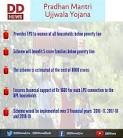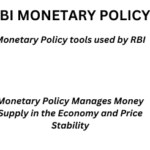EXPANSION OF INDIA-CHILE PREFERENTIAL TRADE AGREEMENT

The Union Cabinet has given its approval for expansion of India – Chile Preferential Trade Agreement (PTA) between India and Chile, under which 86% of India’s exports to Chile will get covered for concessions. India has friendly relations with Chile. Chile has been cooperating with India at the International fora and expansion of India Chile PTA will enhance the trade and economic relations between the two countries. The expansion would be an important landmark in India-Chile relations and consolidate the traditional fraternal relations that have existed between India and LAC countries.
India’s export basket with Chile is diversified and keeping in view the wide variety of tariff lines offered by Chile, the expanded PTA would immensely benefit India. Under the expanded PTA, Chile has offered concessions to India on 1798 tariff lines with Margin of Preference (MoP) ranging from 30%-100% and India has offered concessions to Chile on 1031 tariff lines at 8-digit level with MoP ranging from 10%-100%.
A Preferential Trade Agreement (PTA) between India and Chile was signed in March, 2006. The said PTA came into force with effect from August, 2007. During 2006-07, Chile was ranked 51st export destination for India. Bilateral Trade during the year 2006-07 was US$ 2.3 billion. Trade dynamics changed after the PTA came into force from September 2007. Bilateral trade registered a growth of 58.49% from 2006-07 to 2014-15. Bilateral trade during 2014-15 stood at US $ 3.65 billion with exports at US $ 0.57 billion and imports at US$ 3.08 billion respectively.
CROSS REFRENCES
FTA/PTA/CECA/CEPA
FTA stands for Free Trade Agreement; PTA stands for Preferential Trade Agreement; CECA stand for Comprehensive Economic Cooperation Agreement while CEPA is an acronym for Comprehensive Economic Partnership Agreement. India has economic agreements with rest of the world in the form of Free Trade Agreement/ Preferential Trade Agreement/ Comprehensive Economic Cooperation Agreement and Comprehensive Economic Partnership Agreement. Both CECA and CEPA are forms of economic agreements between India and other countries such as Malaysia, Singapore, and Thailand (for CECA) and Japan, Sri Lanka, and South Korea (for CEPA).
CECA and CEPA both are economic agreements and subject to the benefit of both countries, especially on the economic and trading side.
From the actual name itself, the most obvious difference is the use of the word “cooperation” in the former and “partnership” on the latter. “Cooperation” denotes a loose connection between two countries while the word “partnership” denotes a more personal and more intense relationship between the parties.
In looking at the big picture, CEPA is much broader and more complicated compared to CECA. CECA is mainly concerned with tariff reductions and the elimination of all items that are considered to be listed tariff rate quota items. On the other hand, CEPA has the same components of CECA with an additional focus and options in the terms of trade investments and services.
In a comparable economic standing, CECA is considered as the first step or a stepping stone to accomplish CEPA. If negotiations can still be conducted between countries, and both parties are open to discussion and have a good economic relationship with each other, CECA can evolve into CEPA. This makes CEPA a result of on-going efforts and negotiations of two countries that started from CECA.
FTA stands for free trade agreement. FTA has no mention of other areas of cooperation- It only reduces custom duties on agreed items to zero level. Though FTA/CEPA are economic pacts, there is a difference between the two. Unlike FTA which is a free trade agreement, CEPA aims at lowering trade barriers instead of complete elimination, and covers large area of cooperation beyond trade such as investment, economic assistance, and technology cooperation.
PTA trade pact between countries that reduces tariffs for certain products to the countries who sign the agreement. While the tariffs are not necessarily eliminated, they are lower than countries not party to the agreement. It is a form of economic integration.





0 Comments